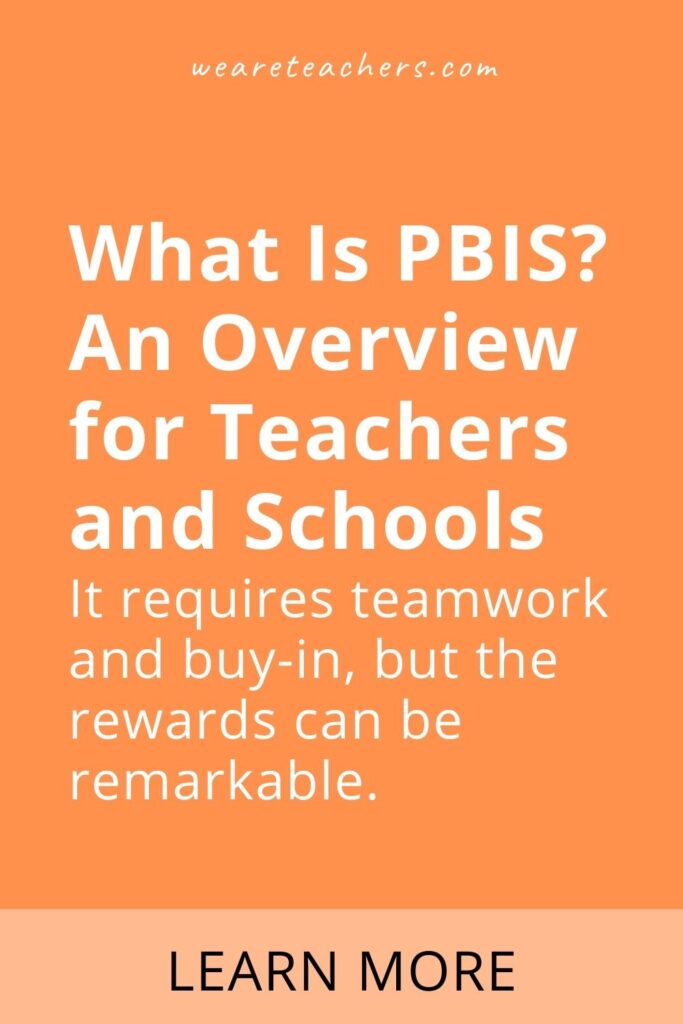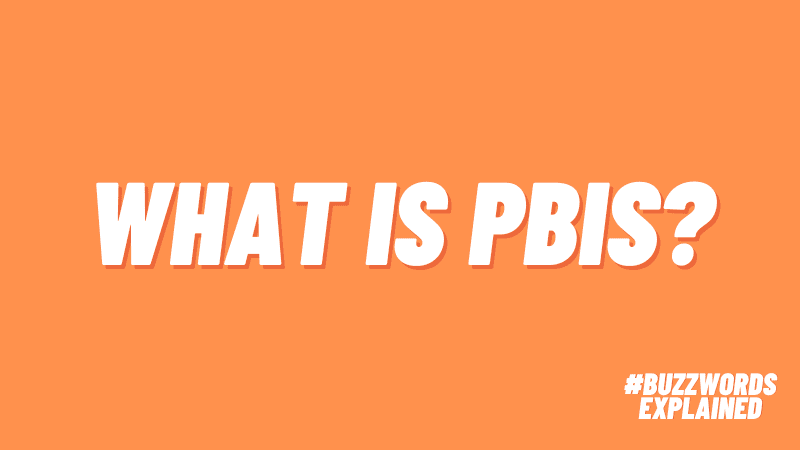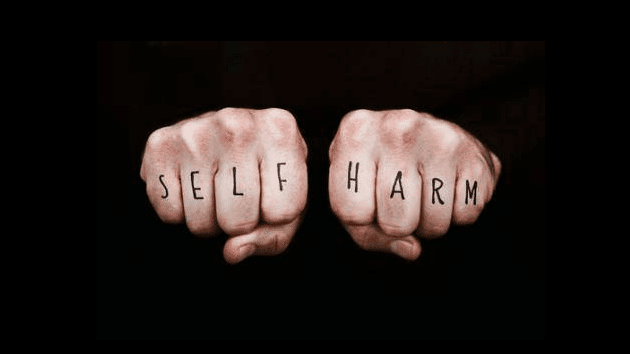At the middle school where Maria teaches, test scores are way down and behavior problems have skyrocketed. Maria feels like she spends a lot more time writing discipline referrals than teaching these days. She’s ready for some change, but her district’s announcement that this year they’ll be implementing a PBIS program has her concerned. Isn’t that just a program where you give points and hand out gimmicky prizes? Not at all, her principal assures her. OK, says Maria, then what is PBIS, and how is it going to help me and my students?
What is PBIS?

Source: Florida PBIS
PBIS stands for Positive Behavior Interventions and Supports. The concept has been around for decades, but the actual phrase/acronym comes from the 1997 amendments to the Individuals With Disabilities Education Act (IDEA). Learn more about the history of PBIS here.
PBIS started as a way to help students with behavioral disorders but has since found its way into the wider educational field. The Center on PBIS describes it as “an evidence-based, tiered framework for supporting students’ behavioral, academic, social, emotional, and mental health.” It’s not a curriculum; rather, it’s a fundamental system that supports students, school staff, and families as they work to make positive behavior changes.
This program provides a common language throughout different grade levels for students, teachers, and staff members. The purpose is to promote and maintain positive relationships among students and staff members while reducing the number of disciplinary actions through preventative measures. It’s not about punishment and fear, it’s about change and intervention. When done correctly and with fidelity, it can have positive effects on a school’s culture.
What are the basics of PBIS?

Source: PBIS Rewards
Whether used at the classroom, school, or district level, PBIS is a very tailored program, right down to the student level. Student participation in the program differs based on their personal needs. Explore the tiers in detail here.
- Tier 1: These practices and systems establish a foundation of regular, proactive support while preventing unwanted behaviors. Schools provide these universal supports to all students school-wide.
- Tier 2: Practices and systems in tier 2 support students who are at risk for developing more serious problem behaviors before those behaviors start. These supports help students develop the skills they need to benefit from core programs at the school.
- Tier 3: Students receive more intensive, individualized support to improve their behavioral and academic outcomes. At this level, schools rely on formal assessments to determine a student’s needs.
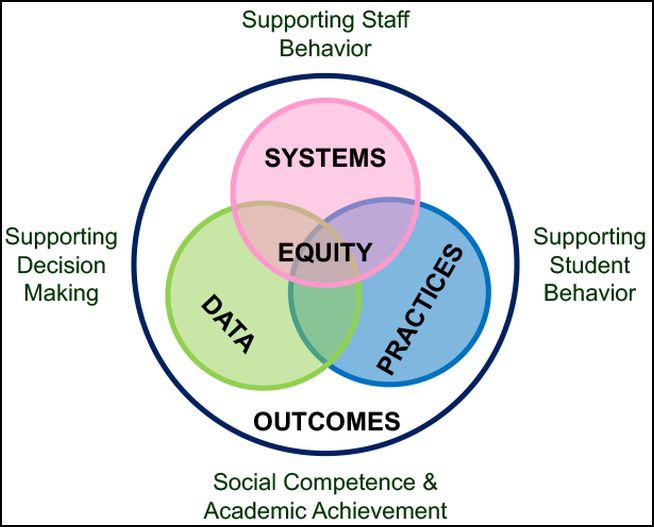
Source: Center on PBIS
At all tiers, the same basic elements apply. These elements are interconnected, and all focus on providing positive outcomes for every student across the board.
Equity
The best educational systems provide a good experience for every student. That means adapting practices to meet individual needs, which may vary widely. PBIS equity focuses on discipline, which often is applied disproportionately across cultural and socioeconomic groups. PBIS seeks to address and correct that issue, providing all students with an environment that allows them to learn and succeed. Learn more about equity in PBIS here.
Systems
Implementing PBIS in a school or district requires a commitment to creating and maintaining systems that support the program. Teachers and administrators must receive the coaching and training they need, not just once but on an ongoing basis. Families are a part of the system too, since consistency and persistency matter. Learn more about the importance of PBIS systems here.
Data
One of the real strengths of PBIS is its focus on meaningful data. Schools and districts can tailor that data to help them make productive decisions and understand what works—and what doesn’t. Learn more about using PBIS data effectively here.
Practices
PBIS practices are those that teachers and administrators undertake to administer the program. There’s no single approved set of practices, though many do include point systems and rewards. Instead, educators work to choose evidence-based methods that fit within their community’s culture and expectations. This means that PBIS can look different in various schools, but the ultimate goal is always the same: meaningful outcomes for students. Learn more about classroom PBIS practices.
What’s the evidence behind PBIS?
Since PBIS touts itself as “evidence-based,” you might be asking just what that evidence is. Schools have been collecting data on PBIS for many years. Here are just a few of the conclusions from a report by the Bazelon Center for Mental Health Law:
- Over a five-year period, standardized math and reading test scores in Maryland’s Anne Arundel County were higher in schools using PBIS.
- In Illinois, 62 percent of third grade students in PBIS schools met the Illinois State Achievement Test Reading Standard, compared with 47 percent in non-PBIS schools.
- A 2004 study of a PBIS urban elementary school found that the annual rate of office discipline referrals decreased by 562 and suspensions fell by 55 over a two-year period.
Read the full report to learn more.
Is PBIS right for my school?
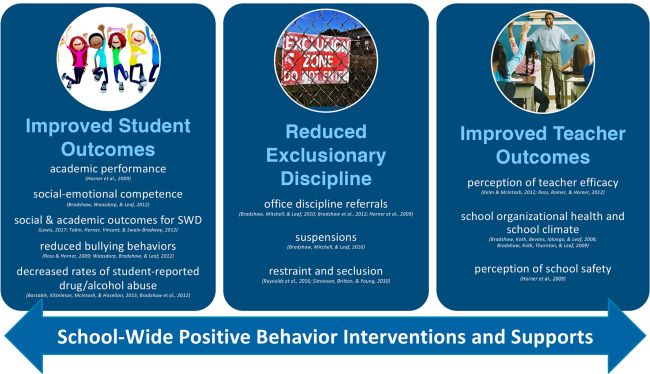
It’s obvious that problem behaviors and a disruptive school climate interfere with academic progress. PBIS has been proven to change factors that help students and their achievement. In PBIS schools, students have increased time in schools and more time for learning. What successful PBIS schools have in common is full implementation. Behaviors cannot be changed and morale lifted if all tiers of support are not in place. It is a three- to five-year process of coaching for teachers and staff, as well as a three- to five-year process of change for the school.
While any school can potentially benefit from PBIS, it’s not a decision to be taken lightly. True success requires buy-in and participation from students, staff, administration, and families. It takes time to implement the program and can initially require more work on the part of staff. When everyone works together and makes a commitment, though, the results can be real and rewarding.
A PBIS success story
One teacher shared their school’s experience on the WeAreTeachers HELPLINE group on Facebook:
“This is our second year with PBIS, and it’s been a slow process but it is working. I always see a lot of posts about PBIS being bribery, but if that’s how your school is doing it, you are doing it wrong. Our PBIS team has gone to massive amounts of training and we meet regularly to create common language and actions based on the student data that I am actually in charge of collecting.
“We do have tickets that can be used to buy school supplies and a few fun things like school clothing, but the tickets are handed out quietly, and a reason is always given as to why that student has gotten it. We use the terms ‘Be respectful, responsible, engaged and safe,’ which is on the ticket, and we circle what trait the student is excelling in. For example, one of my classes is chatty. If our hand-up signal isn’t working fast enough, I will continue teaching while silently handing out tickets to those who are doing what they should. We’ve also made matrices for behavior in every area of the school, which we review with all grades regularly.
“It is working. It is about staff using the same language and building teams for student support. You cannot start with the most difficult kids, you have to start with the 80%, then move to your other tiers to make it work. Rushing through the tiers or simply buying into the rewards is not going to work. But the kids definitely see that we as teachers are all backing each other with language and actions, and the differences between the HS kids that got PBIS and those that didn’t in the upper grades is unbelievable!”
It’s not for everyone
Unfortunately, PBIS programs can fail, especially when the support and buy-in just don’t exist. Here are some thoughts shared by another HELPLINE teacher:
“At a rural middle school, I have used it for 3 years, and I don’t like it. If administration doesn’t follow up with discipline and parents, the system is moot. We have a class that doesn’t get any referrals, and the other two that rack up a whole bunch. Some kids don’t care about signing a piece of paper. There are no consequences for getting a minor. When a student accumulates 3 then there are consequences and they get a major. However, there’s no consequence for accumulating majors. It’s a pointless system if administration isn’t strict about consequences.”
Ultimately, these two opposing stories show that every school needs to do the research and make the decision that feels right for themselves.
How do we get started with PBIS?
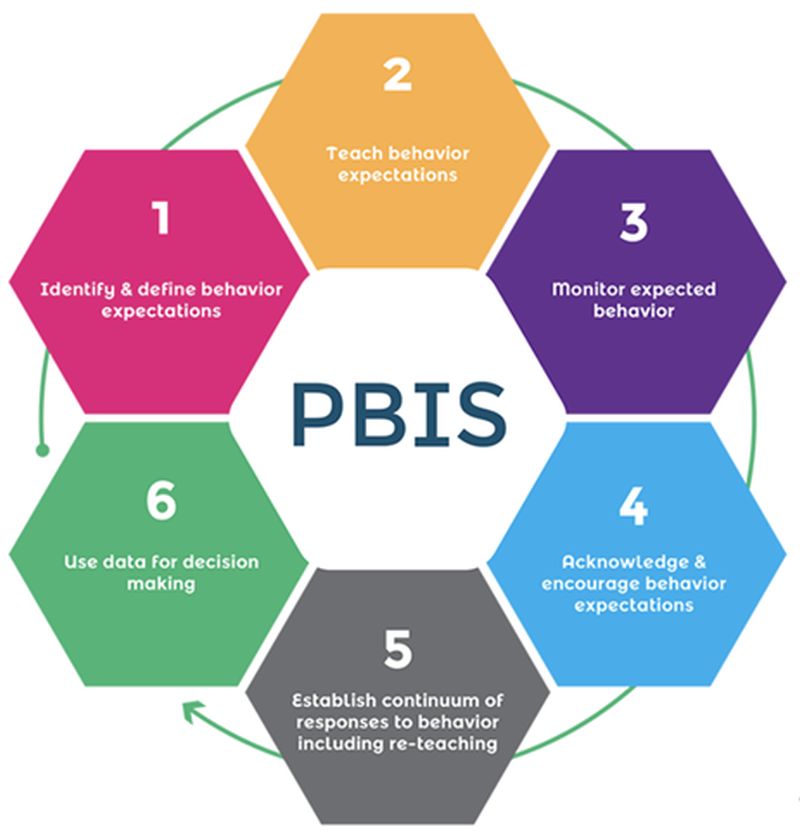
First of all, understand that this is going to take time. You can’t do a one-day training rollout and expect the program to succeed. It will require professional development, school leadership, and careful planning. Ideally, administrators and teachers will work together to develop the program, then share it with students and their families.
Many states have their own PBIS programs and websites, so do a search to see if yours can help you get started. Otherwise, here are a few respected resources to try:
Has your school tried PBIS? Come share your experiences and ask for advice on the WeAreTeachers HELPLINE group on Facebook.
Plus, check out What Teachers Need To Know About Restorative Justice.
